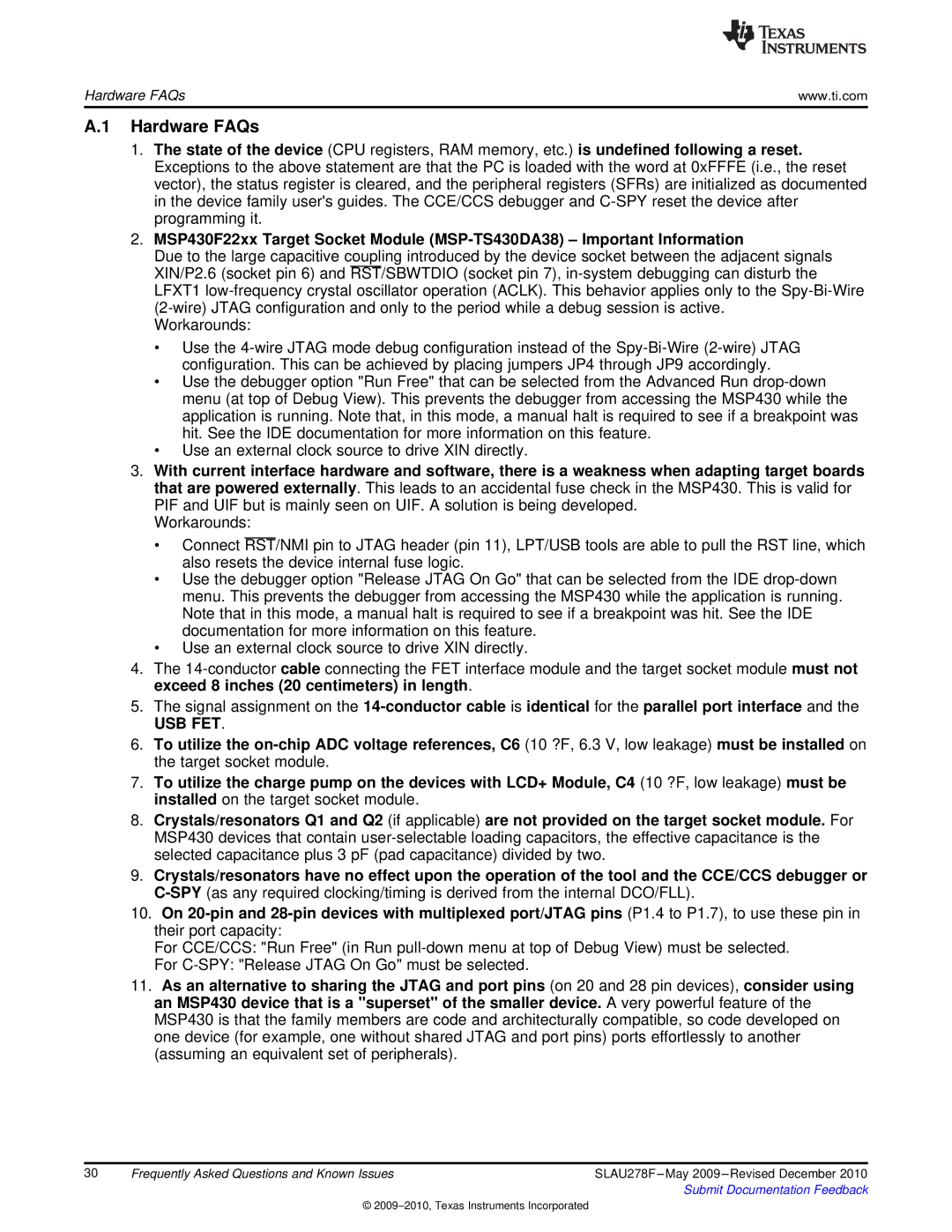
Hardware FAQs | www.ti.com |
A.1 Hardware FAQs
1.The state of the device (CPU registers, RAM memory, etc.) is undefined following a reset. Exceptions to the above statement are that the PC is loaded with the word at 0xFFFE (i.e., the reset vector), the status register is cleared, and the peripheral registers (SFRs) are initialized as documented in the device family user's guides. The CCE/CCS debugger and
2.MSP430F22xx Target Socket Module
Due to the large capacitive coupling introduced by the device socket between the adjacent signals XIN/P2.6 (socket pin 6) and RST/SBWTDIO (socket pin 7),
Workarounds:
•Use the
•Use the debugger option "Run Free" that can be selected from the Advanced Run
•Use an external clock source to drive XIN directly.
3.With current interface hardware and software, there is a weakness when adapting target boards that are powered externally. This leads to an accidental fuse check in the MSP430. This is valid for PIF and UIF but is mainly seen on UIF. A solution is being developed.
Workarounds:
•Connect RST/NMI pin to JTAG header (pin 11), LPT/USB tools are able to pull the RST line, which also resets the device internal fuse logic.
•Use the debugger option "Release JTAG On Go" that can be selected from the IDE
•Use an external clock source to drive XIN directly.
4.The
5.The signal assignment on the
USB FET.
6.To utilize the
7.To utilize the charge pump on the devices with LCD+ Module, C4 (10 ?F, low leakage) must be installed on the target socket module.
8.Crystals/resonators Q1 and Q2 (if applicable) are not provided on the target socket module. For MSP430 devices that contain
9.Crystals/resonators have no effect upon the operation of the tool and the CCE/CCS debugger or
10.On
For CCE/CCS: "Run Free" (in Run
For
11.As an alternative to sharing the JTAG and port pins (on 20 and 28 pin devices), consider using an MSP430 device that is a "superset" of the smaller device. A very powerful feature of the MSP430 is that the family members are code and architecturally compatible, so code developed on one device (for example, one without shared JTAG and port pins) ports effortlessly to another (assuming an equivalent set of peripherals).
30 | Frequently Asked Questions and Known Issues | SLAU278F |
|
| Submit Documentation Feedback |
©
